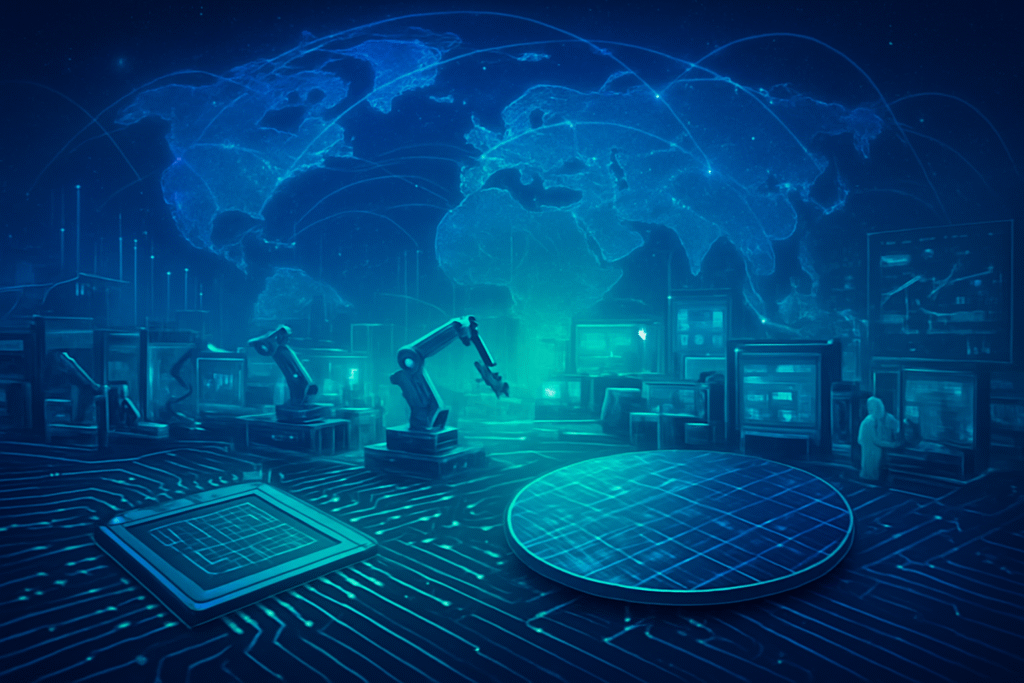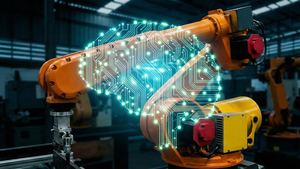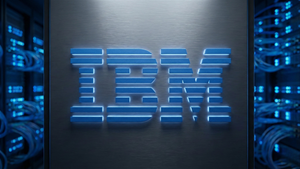
October 31, 2025 – September 2025 marked a significant turning point for the global economy, as a robust and rapidly improving semiconductor sector unleashed a powerful wave of growth in industrial production and facility investment worldwide. This resurgence, fueled by insatiable demand for advanced chips across burgeoning technology frontiers, underscores the semiconductor industry's critical role as the foundational engine of modern economic expansion and technological advancement.
The dramatic uptick signals a strong rebound and a new phase of expansion, particularly after periods of supply chain volatility. Industries from automotive to consumer electronics, and crucially, the burgeoning Artificial Intelligence (AI) and machine learning (ML) domains, are experiencing a revitalized supply of essential components. This newfound stability and growth in semiconductor availability are not merely facilitating existing production but are actively driving new capital expenditures and a strategic re-evaluation of global manufacturing capabilities.
The Silicon Catalyst: Unpacking September's Technical Drivers
The impressive performance of the semiconductor economy in September 2025 was not a singular event but the culmination of several powerful, interconnected technological accelerants. At its core, the relentless advance of Artificial Intelligence and Machine Learning remains the paramount driver, demanding ever more powerful and specialized chips—from high-performance GPUs and NPUs to custom AI accelerators—to power everything from massive cloud-based models to edge AI devices. This demand is further amplified by the ongoing global rollout of 5G infrastructure and the nascent stages of 6G research, requiring sophisticated components for telecommunications equipment and next-generation mobile devices.
Beyond connectivity, the proliferation of the Internet of Things (IoT) across consumer, industrial, and automotive sectors continues to generate vast demand for low-power, specialized microcontrollers and sensors. Concurrently, the automotive industry's accelerating shift towards electric vehicles (EVs) and autonomous driving technologies necessitates a dramatic increase in power management ICs, advanced microcontrollers, and complex sensor processing units. Data centers and cloud computing, the backbone of the digital economy, also sustain robust demand for server processors, memory (DRAM and NAND), and networking chips. This intricate web of demand has spurred a new era of industrial automation, often termed Industry 4.0, where smart factories and interconnected systems rely heavily on advanced semiconductors for control, sensing, and communication.
This period of growth distinguishes itself from previous cycles through its specific focus on advanced process nodes and specialized chip architectures, rather than just broad commodity chip demand. The immediate industry reaction has been overwhelmingly positive, with major semiconductor companies reportedly announcing increased capital expenditure (CapEx) projections for 2026, signaling confidence in sustained demand and plans for new fabrication plants (fabs). These multi-billion dollar investments are not just about capacity but also about advancing process technology, pushing the boundaries of what chips can do, and strategically diversifying manufacturing footprints to enhance supply chain resilience.
Corporate Beneficiaries and Competitive Realignment
The revitalized semiconductor economy has created a clear hierarchy of beneficiaries, profoundly impacting AI companies, tech giants, and startups alike. Leading semiconductor manufacturers are at the forefront, with companies like NVIDIA (NASDAQ: NVDA), TSMC (NYSE: TSM), Intel (NASDAQ: INTC), and Samsung Electronics (KRX: 005930) reporting strong performance and increased order backlogs. Equipment suppliers such as ASML Holding (AMS: ASML) are also seeing heightened demand for their advanced lithography tools, indispensable for next-generation chip production.
For tech giants like Microsoft (NASDAQ: MSFT), Amazon (NASDAQ: AMZN), and Alphabet (NASDAQ: GOOGL), who are heavily invested in cloud computing and AI development, a stable and growing supply of high-performance chips is crucial for expanding their data center capabilities and accelerating AI innovation. Industrial automation leaders such as Siemens AG (ETR: SIE) and Rockwell Automation (NYSE: ROK) are also poised to capitalize, as the availability of advanced chips enables the deployment of more sophisticated smart factory solutions and robotics.
The competitive landscape is intensifying, with companies vying for strategic advantages through vertical integration, R&D leadership, and robust supply chain partnerships. Those with diversified manufacturing locations and strong intellectual property in cutting-edge chip design stand to gain significant market share. This development also has the potential to disrupt industries that have lagged in adopting automation, pushing them towards greater technological integration to remain competitive. Market positioning is increasingly defined by access to advanced chip technology and the ability to rapidly innovate in AI-driven applications, making resilience in the semiconductor supply chain a paramount strategic asset.
A Wider Economic and Geopolitical Ripple Effect
The September semiconductor boom transcends mere industry statistics; it represents a significant milestone within the broader AI landscape and global economic trends. This surge is intrinsically linked to the accelerating AI revolution, as semiconductors are the fundamental building blocks for every AI application, from large language models to autonomous systems. Without a robust and innovative chip sector, the ambitious goals of AI development would remain largely unattainable.
The impacts are far-reaching: economically, it promises sustained growth, job creation across the manufacturing and technology sectors, and a boost in global trade. Technologically, it accelerates the deployment of advanced solutions in healthcare, transportation, energy, and defense. However, potential concerns loom, including the risk of oversupply in certain chip segments if investment outpaces actual demand, and the enduring geopolitical tensions surrounding semiconductor manufacturing dominance. Nations are increasingly viewing domestic chip production as a matter of national security, leading to significant government subsidies and strategic investments in regions like the United States and Europe, exemplified by initiatives such as the European Chips Act. This period echoes past tech booms, but the AI-driven nature of this cycle suggests a more profound and transformative impact on industrial and societal structures.
The Horizon: Anticipated Developments and Challenges
Looking ahead, the momentum from September 2025 is expected to drive both near-term and long-term developments. In the near term, experts predict continued strong demand for AI accelerators, specialized automotive chips, and advanced packaging technologies that integrate multiple chiplets into powerful systems. We can anticipate further announcements of new fabrication plants coming online, particularly in regions keen to bolster their domestic semiconductor capabilities. The long-term outlook points towards pervasive AI, where intelligence is embedded in virtually every device and system, from smart cities to personalized healthcare, requiring an even more diverse and powerful array of semiconductors. Fully autonomous systems, hyper-connected IoT ecosystems, and new frontiers in quantum computing will also rely heavily on continued semiconductor innovation.
However, significant challenges remain. The industry faces persistent talent shortages, particularly for highly skilled engineers and researchers. The massive energy consumption associated with advanced chip manufacturing and the burgeoning AI data centers poses environmental concerns that demand sustainable solutions. Sourcing of critical raw materials and maintaining stable global supply chains amid geopolitical uncertainties will also be crucial. Experts predict a sustained period of growth, albeit with the inherent cyclical nature of the semiconductor industry suggesting potential for future adjustments. The race for technological supremacy, particularly in AI and advanced manufacturing, will continue to shape global investment and innovation strategies.
Concluding Thoughts on a Pivotal Period
September 2025 will likely be remembered as a pivotal moment in the ongoing narrative of the global economy and technological advancement. The significant improvement in the semiconductor economy, acting as a powerful catalyst for increased industrial production and facility investment, underscores the undeniable truth that semiconductors are the bedrock of our modern, digitally driven world. The primary driver for this surge is unequivocally the relentless march of Artificial Intelligence, transforming demand patterns and pushing the boundaries of chip design and manufacturing.
This development signifies more than just an economic upswing; it represents a strategic realignment of global manufacturing capabilities and a renewed commitment to innovation. The long-term impact will be profound, reshaping industrial landscapes, fostering new technological ecosystems, and driving national economic policies. As we move forward, the coming weeks and months will be crucial for observing quarterly earnings reports from major tech and semiconductor companies, tracking further capital expenditure announcements, and monitoring governmental policy shifts related to semiconductor independence and technological leadership. The silicon heart of the global economy continues to beat stronger, powering an increasingly intelligent and interconnected future.
This content is intended for informational purposes only and represents analysis of current AI developments.
TokenRing AI delivers enterprise-grade solutions for multi-agent AI workflow orchestration, AI-powered development tools, and seamless remote collaboration platforms.
For more information, visit https://www.tokenring.ai/.








